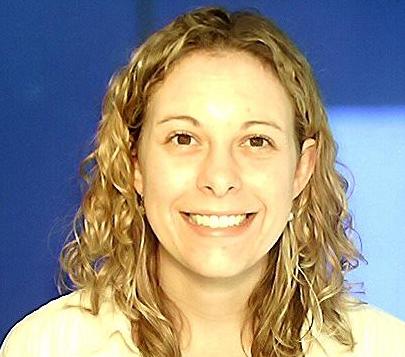 By Melissa Walker, Grace Cottage Physical Therapist
By Melissa Walker, Grace Cottage Physical Therapist
as originally appeared in the Brattleboro Reformer’s Graceful Health series, March 25, 2016
Vestibular rehab is physical therapy for your vestibular system, one of the body systems that helps you maintain your balance when you stand and move. The system is made up of several parts within the inner ear that tell you whether you are standing upright or not, and that provide information on the position and motion of your head, stabilizing you as you move.
Ideally, the vestibular system helps you maintain your equilibrium, keeping your center of mass over your base of support. But sometimes there are problems with this system.
One of the most common vestibular disorders is known as Benign Paroxysmal Positional Vertigo or BPPV. With BPPV, people experience episodes of a spinning sensation known as vertigo. The vertigo symptoms come on quickly and are brief in duration, occurring within 40 seconds of positional changes like lying down, rolling over, bending over, or looking up.
Other symptoms include balance problems that can last for a few hours or days after a vertigo episode. Vague symptoms such as light headedness or the feeling of floating are also reported. These symptoms can lead to neck pain due to muscle guarding. People will limit their head movements to avoid the vertigo symptoms, which leads to muscle tightness in the neck.
The tendency to experience BPPV increases with age. On average, people with BPPV are in their 50s. Women are slightly more likely to get it than men. Fifty percent of all dizziness in older people is due to BPPV. It is the most common cause of vertigo.
BPPV occurs when a particle gets trapped in one of the three semicircular canals located in the inner ear. These canals are filled with fluid and lined with tiny hairs. The particle sits at the bottom of the canal until a patient moves his/her head. It then gets picked up in the fluid and disrupts the sensory hair cells in the canal. The result is that the patient feels like the room is spinning. Once the particle settles back down to the bottom of the canal, the symptoms stop and don’t occur again until the patient’s head position changes.
BPPV can clear up on its own, but it can clear up more quickly if treated by a physical therapist or another medical professional who treats vestibular disorders.
Anyone can see a physical therapist at Grace Cottage with a doctor’s referral. For BPPV, the first step is an evaluation. The physical therapist will begin by taking a medical history and then perform some neck and eye screens to rule out anything other than BPPV. Once the diagnosis of BPPV is confirmed, then the disorder can be treated with various maneuvers that involve moving the patient’s head.
In order to treat BPPV, the vertigo symptoms need to be provoked. The eyes of a patient experiencing vertigo will move involuntarily in a rotary direction. By looking at the patient’s eyes, the therapist can determine what side (right or left ear) and what inner ear canal has the problem and then treat it accordingly.
Once the correct maneuver is determined, it will be done 2-3 times during a session, until it can be done without symptoms. Then the patient will be sent home with a follow-up appointment.
It is important to remember that the therapist will bring on your symptoms, so it is a good idea to have someone drive you to and from your appointments. The evaluation with first treatment takes about one hour, and follow up appointments take about 30 minutes.
If you wake up one morning and feel the room is spinning for no apparent reason, don’t worry. Go to your doctor for a physical therapy referral, now that you know there is treatment for it. You don’t have to grin and bear it.
Melissa Walker has her B.S. and Doctorate in Physical Therapy from Simmons College. She has experience in outpatient orthopedics and acute care rehabilitation.
